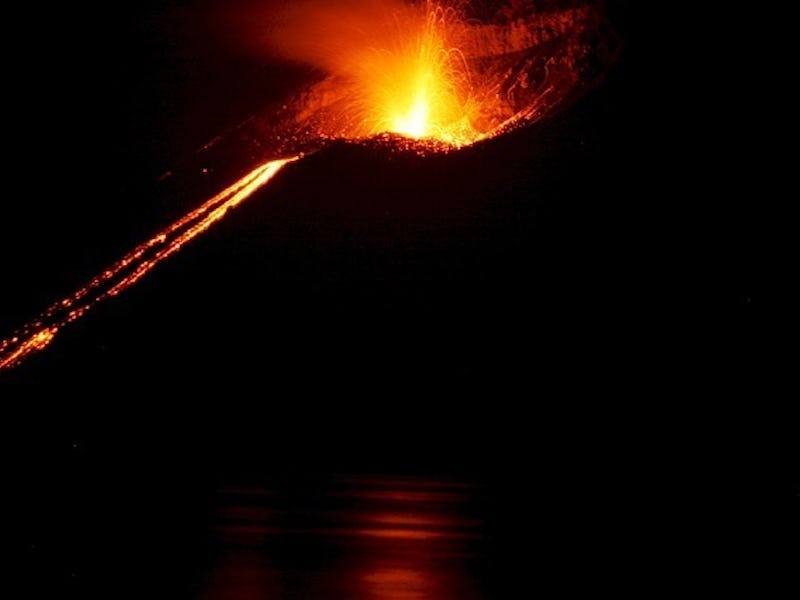The Curiosity Rover Finds Ancient Mars Volcanoes May Have Been More Explosive Than We Thought
A new study found something totally unexpected on the surface of the red planet.

Mars looks like a cold, dead wasteland these days, but it possesses a history of rich, vibrant geology — specifically in the form of volcanoes, and scientists already believe an ancient one probably gave Mars a major facelift that changed the surface of the planet.
Additionally, a separate bout of volcanic activity shows where an extensive ice sheet once remained.
Now, a new paper published in the Proceedings of the National Academy of Sciences illustrates new findings that silica minerals found on the surface of Mars are the result of ancient volcanic activity possibly more powerful than ever imagined — complicating what we already know about the ancient history of Mars and creating more questions about the chemical processes behind the red planet.
Using the Curiosity rover, NASA scientists unexpectedly stumbled upon tridymite at the site of famous Gale crater. On Earth, tridymite is only formed as a result of extremely hot silicic volcanism, which suggests that ancient Mars once had a slew of violent volcanoes that heavily influenced the geology of the planet.
Silicic volcanism is responsible for such events on earth as the Mount St. Helens eruption. It’s a highly explosive form of volcanic activity — a consequence of tectonics planets moving from the Earth’s outer shell into the Earth’s mantle and forcing water into the molten depths. Those things then melt into magma, which is then ejected out into the surface in an eruption.
The combination of silica and hot temperatures forms tridymite. It’s the only way scientists know how tridymite can be naturally created. “The kind of volcano that would produce tridymite is usually very explosive,” lead researcher Richard Morris, a planetary scientist at NASA, tells Inverse.
The discovery of tridymite really raises more questions than it answers. “Plate tectonics is responsible for the silicic volcanism on Earth, but we see no evidence for plate tectonics on Mars,” says Morris. “So we were surprised to find tridymite at Gale crater.”
Furthermore, according to Morris, “water is involved in plate tectonics on the Earth to produce silicic volcanism,” so this new discovery also begs the question of where that water came from. Mars, indeed, did boast ancient lakes of old — and Lake Gale is actually thought to be one of those massive bodies of water. In all likelihood, Lake Gale or other nearby channels of water played a role in helping those instances of silicic volcanism create deposits of tridymite.
“We do know that the crater once had a crater lake and that sediment formed in the lake,” says Morris. “At least in one place, sediment that contained the mineral tridymite was carried into the lake.”
All of this mystery basically means that either Mars possessed incredibly more powerful volcanoes than we thought, or tridymite might actually produced in different ways than we currently know. “Mars is not the Earth and there may be some geologic process, possibly involving water, unknown on the Earth that forms tridymite on Mars a relatively low temperatures.” says Morris. “There will be a lot of future research into this idea.”